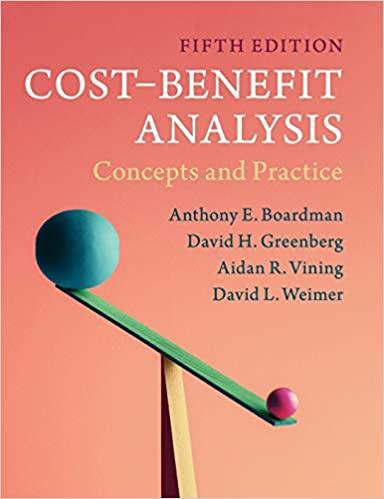Answered step by step
Verified Expert Solution
Question
1 Approved Answer
1. Compute applied overhead and determine the amount of underapplied or overapplied overhead: Actual manufacturing overhead cost Predetermined overhead rate Actual direct labor hours Manufacturing




 1. Compute applied overhead and determine the amount of underapplied or overapplied overhead: Actual manufacturing overhead cost Predetermined overhead rate Actual direct labor hours Manufacturing overhead applied Underapplied (overapplied) manufacturing overhead 2. Prepare a schedule of cost of goods manufactured: Stanford Enterprises Schedule of Cost of Goods Manufactured 33 Direct materials: 34 Raw materials inventory, beginning 35 Add: Purchases of raw materials 36 Total raw materials available 37 Deduct: Raw materials inventory, ending 38 Raw materials used in production 39. Direct labor 40 Manufacturing overhead applied to work in process 41 Total manufacturing costs 42 Add: Beginning work in process inventory 43 44 Deduct: Ending work in process inventory 45 Cost of goods manufactured Use the data to answer the following. Stanford Enterprises Schedule of Cost of Goods Sold Finished goods inventory, beginning Add: Cost of goods manufactured Cost of goods available for sale Deduct: Finished goods inventory, ending Unadjusted cost of goods sold Underapplied (overapplied) overhead Adjusted cost of goods sold Stanford Enterptises has provided its manufocturing estimated and actual data for the year end. The Controller has asked you to compute the predetermined overhead rate, the schedule of cost of goods manufoctured, and the schedule of cost of goods sold. Use the informotion included in the Excel Similation and the Excel functions described below to complete the task. - Cell Reference: Aliows you to refer to doto from onother cell in the worksheet. From the Excel Simulation below, if in a blank cell, "=E5" was entered, the formula would output the resuit from cell ES or $275.000 in this example. - Basic Math functions: Allows you to use the bosic math symbols to perform mothematical functions. You can use the foliowing keys: (plus sign to add), - (minus sign to subtroct), "(asterisk sign to multiply), and / (forward slash to divide). From the Excel Simulation below, if in o blank cell =E6+E ? was entered, the formula would odd the volues from those cells and output the result, or 52.760 in this example if using the otfier math symbols the result would output on oppropriate answer for its function. - 5 UM function: Allows you to refer to multiple celis and adds ali the values You can add individuol cell references or ranges to utilize this function. Fron the Excel Simulotion below, if in o blank cell "=SUM(Eto E11E12]" wos entered, the formulo would output the result of adding the same result of odding those celis, except they ore expressed as a range in the formula, and the result would be 1.214 , 050 in this example
1. Compute applied overhead and determine the amount of underapplied or overapplied overhead: Actual manufacturing overhead cost Predetermined overhead rate Actual direct labor hours Manufacturing overhead applied Underapplied (overapplied) manufacturing overhead 2. Prepare a schedule of cost of goods manufactured: Stanford Enterprises Schedule of Cost of Goods Manufactured 33 Direct materials: 34 Raw materials inventory, beginning 35 Add: Purchases of raw materials 36 Total raw materials available 37 Deduct: Raw materials inventory, ending 38 Raw materials used in production 39. Direct labor 40 Manufacturing overhead applied to work in process 41 Total manufacturing costs 42 Add: Beginning work in process inventory 43 44 Deduct: Ending work in process inventory 45 Cost of goods manufactured Use the data to answer the following. Stanford Enterprises Schedule of Cost of Goods Sold Finished goods inventory, beginning Add: Cost of goods manufactured Cost of goods available for sale Deduct: Finished goods inventory, ending Unadjusted cost of goods sold Underapplied (overapplied) overhead Adjusted cost of goods sold Stanford Enterptises has provided its manufocturing estimated and actual data for the year end. The Controller has asked you to compute the predetermined overhead rate, the schedule of cost of goods manufoctured, and the schedule of cost of goods sold. Use the informotion included in the Excel Similation and the Excel functions described below to complete the task. - Cell Reference: Aliows you to refer to doto from onother cell in the worksheet. From the Excel Simulation below, if in a blank cell, "=E5" was entered, the formula would output the resuit from cell ES or $275.000 in this example. - Basic Math functions: Allows you to use the bosic math symbols to perform mothematical functions. You can use the foliowing keys: (plus sign to add), - (minus sign to subtroct), "(asterisk sign to multiply), and / (forward slash to divide). From the Excel Simulation below, if in o blank cell =E6+E ? was entered, the formula would odd the volues from those cells and output the result, or 52.760 in this example if using the otfier math symbols the result would output on oppropriate answer for its function. - 5 UM function: Allows you to refer to multiple celis and adds ali the values You can add individuol cell references or ranges to utilize this function. Fron the Excel Simulotion below, if in o blank cell "=SUM(Eto E11E12]" wos entered, the formulo would output the result of adding the same result of odding those celis, except they ore expressed as a range in the formula, and the result would be 1.214 , 050 in this example





Step by Step Solution
There are 3 Steps involved in it
Step: 1

Get Instant Access to Expert-Tailored Solutions
See step-by-step solutions with expert insights and AI powered tools for academic success
Step: 2

Step: 3

Ace Your Homework with AI
Get the answers you need in no time with our AI-driven, step-by-step assistance
Get Started


